
Pages:
<< Back 6
7 8
9 10
11 12 13
14 15 Next
>>
In
the financial affairs office Lawrence C. Elam became the new comptroller
in 1974, with William P. Marley as director of personnel and purchasing
and Edward N. Pearson as chief accountant. Virginia S. Byrkit was
named director of residence halls and university food service in
1976. Robert Farber, who remained as academic dean throughout the
Kerstetter presidency was aided by a series of assistant and associate
deans. The first assistant dean was Clark F. Norton, who also acted
as director of graduate studies while continuing to teach part-time
in the political science department. When he resigned to join Senator
Birch Bayh's staff in Washington in 1965, Dwight L. Ling of the
history department assumed the office of the assistant dean while
Professor Emeritus Herold Ross took temporary charge of graduate
studies.
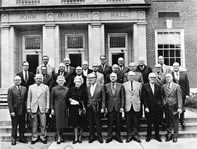 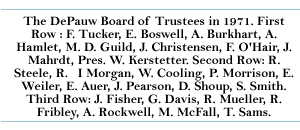
In 1966 John A. Ricketts of the chemistry department was named director
of graduate studies. Ling, whose responsibilities grew to include
such matters as faculty development and the oversight of the Experimental
Division, was promoted to associate dean in 1972. Other faculty
members continued to hold the post of assistant dean with varied
functions: Thomas A. Davis and John R. Anderson, of the mathematics
department, were successively directors of graduate studies. William
J. Petrek and Marvin Swanson served successively as directors of
international study and off-campus programs. And for a briefer period
with more generalized duties, Stanley Caine and John McFarland of
the history and chemistry departments, also served as assistant
deans.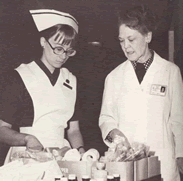

Faculty ranks continued to grow in this period, along with student
enrollment. Annual tuition increases as well as a rise in annual
giving made possible somewhat higher levels of faculty salaries
at all ranks. Newcomers to the teaching faculty in
this period tended to represent a more diverse pattern of geographical,
religious, cultural, and educational backgrounds, as departments
conducted national searches for the most highly qualified candidates.
Although the university endeavored to follow federal guidelines
concerning affirmative action and equal opportunity, there was only
slow progress in the employment of women and minorities. Increasing
specialization in the training and interests of many younger intructors
made for a less unified outlook and intellectual focus in the teaching
faculty. By the mid-1970s it was becoming clear that DePauw was
moving away from the ideal of a tightly knit, relatively homogeneous
academic community toward a wider vision of a more diversified,
profession-oriented, and world-minded university.
New additions to the faculty in this period were Larry G. Sutton
in speech; William D. Meehan and David W. Herrold in art; William
C. Cavanaugh, Elizabeth A. Christman, Cynthia E. Cornell, Thomas
A. Emery, F. Walker Gilmer, Keith M. Opdahl, and Robert P. Sedlack
in English; Marcia A. McKelligan in philosophy and religion; James
L. Cooper, Norman Levine, Roderick A. Clifford, and Stanley P.
Caine in history; and Ralph Gray, Alan E. Pandratz, and Gary D.
Lemon in the economics department, to which former staff member
Gerald E. Warren returned as head in 1966.
Underwood Dudley,
Joseph W. Corbett, Louis F. Smogor, and Carl P. Singer in mathematics,
astronomy, and computer science (the last also succeeding Robert
J. Thomas as director of the Computer Center); B. L. Garrett, Michael
P. Silver, Edward G. Ypma, Margaret Berrio, and Steven R. Raines
in psychology; Charles E. Mays and Michael D. Johnson in zoology;
Ernest R. Henninger in physics; and Saad E. M. Ibrahim, John E.
Kaemmer, and James M. Manmon in sociology and anthropology.
Other new faculty members were Vincent A. Serpa, Agnes Porter(Beaudry),
James R. Curry, Kent B. Mecum, James S. Rambo, and Gordon B. Walters
in Romance languages; Cornelius Van Zwoll, Darryl E. Gibson and
Edward E. Mayer in German and Russian; Roy L. Swihart, Mildred L.
Wills, Stanley Warren, and Judith A. Raybern in education; Robert
E. Calvert, Amir Rafat, O. Ralph Raymond, and Byron W. Daynes in
political science; and Judith Jenkins (George), Leroy Schoenfeld,
Edward H. Meyer, Barbara Rae Federman, S. Page Cotton, and Mary
Murphy (Bretscher) in physical education.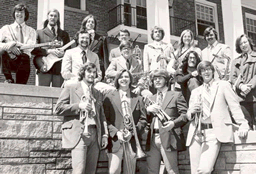
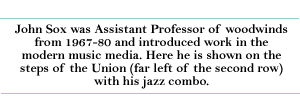
The
School of Music added Thomas D. Fitzpatrick, Eunice A. Wilcox, John
R. Sox, Mary A. C. Heller, Lorna B. Griffitt, Orcenith G. Smith,
Claude Cymerman and Stanley R. Irwin. The School of Nursing hired
Catherine L. Powell, Eleanor J. Miller, and Doris J. Froebe, the
last of whom succeeded Catherine Friddle as director in 1974. New
members of the library staff included Mary Jane Carr and Catherine
A. Bean. David E. Horn followed David J. Olson as archivist in 1974.
The 1960s and early 1970s constituted one of the most turbulent
periods in the history of the university. It began with the strong
impact on campus of the national civil rights movement led by Martin
Luther King Jr. and others. Concerned students and faculty members
began to question, more urgently than ever before, the racial discrimination
practiced by the social fraternities and certain commercial enterprises
in the city, especially the barber shops patronized by DePauw students.
In 1963 the Greencastle chapter of the National Association for
the Advancement of Colored People was organized with considerable
representation from the DePauw community. Both
students and professors took part in its activities, which included
demonstrations and protest marches on campus and downtown.
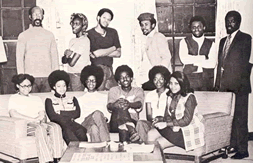 _______________________________________
_______________________________________
After
the early 1960s, DePauw blacks became organized
into the Association
of Afro-American Students, which supported academic and social
programs, promoted black concerns, and provided camaraderie.
In this picture for the Mirage of 1972, the students are
shown with Assistant Professor of Art Willis "Bing" Davis standing
on the far left
and Oliver C. rice, admissions counselor and
assistant to the dean of students, on the far right.
________________________________________
The student senate responded to the rising social consciousness
on campus by forming an interracial study committee, and the administration
added to the statement of purposes and aims in the college catalogue
the sentence: "DePauw University, in the Judeo-Christian tradition,
believes that discrimination on the basis of race, creed, or nationality
is incompatible with its principles." Not long after the organization
of a local chapter of the Association of Afro-American Students,
the university converted Locust Manor into the AfroAmerican House,
which served variously as a residence for black students and a center
for AfroAmerican social and cultural affairs. In the meantime a
few fraternity and sorority chapters opened their membership to
blacks.
Back
to Top
Pages:
<< Back 6
7 8
9 10
11 12 13
14 15 Next
>>
|







 _______________________________________
_______________________________________